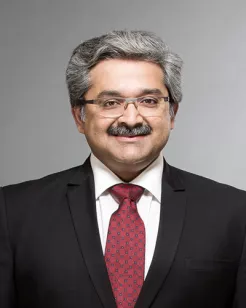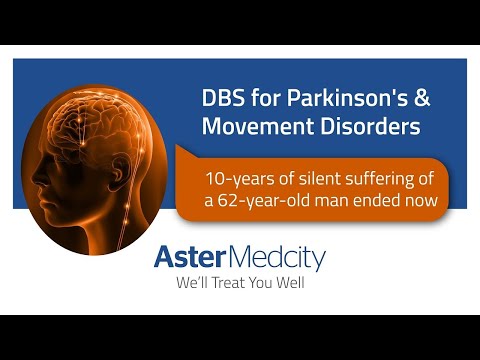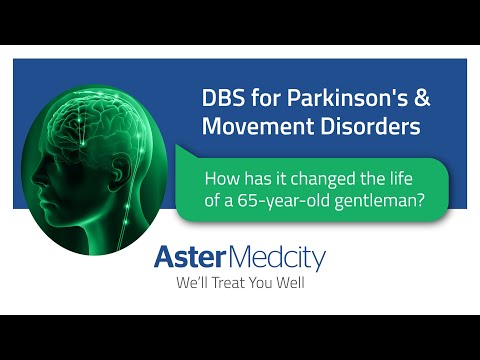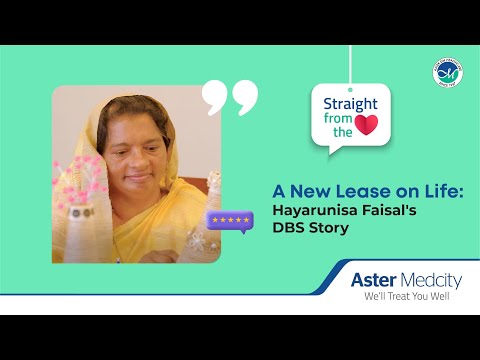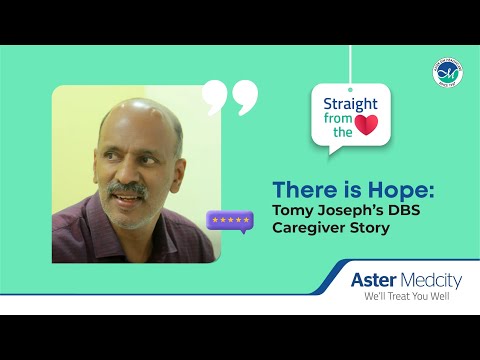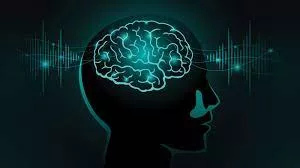What is DBS?
DBS involves delivering small amounts of electricity via 2 thin electrodes (one on each side of the brain) which are introduced through 2 small holes in the skull and implanted into specific target areas deep in the brain. This procedure called stereotactic neurosurgery, is different from usual neurosurgery. The source of the electric current delivered, is a sophisticated pacemaker-like device (implantable pulse generator or IPG) placed under the skin of the chest, below the collar bone. The IPG on the chest is connected to the two electrodes within the brain through extension cables passing under the skin of the neck, behind the ear. Several software packages are available to plan the placement of the electrode using the brain MRI of the person.
How does DBS work?
The accuracy of placement is confirmed prior to implantation of the DBS electrode by the movement disorder specialist, first, by recording characteristic firingpatterns of brain cells in the target area using a procedure called microelectrode recording. This is followed by a test electrical stimulation to assess the benefits or any unwanted effects of stimulation in that location. Once the location is confirmed, the DBS electrode is implanted in that spot. In the days to weeks following DBS surgery, the movement disorder specialist will select the appropriate current settings in the implanted IPG that will provide the best clinical benefits to the patient using a remote controller-like device. This procedure is called programming. It may need a few programming sessions in the first 3-6 months to identify the best stimulation settings for an individual. Thereafter, clinic visits can be annual, to check battery settings, battery life and for adjustment of drugs.
What is the role of DBS in Parkinson's Disease?
Experiencing fluctuations in response to levodopa with or without dyskinesias. Tremor which is not relieved by levodopa
Who cannot tolerate high doses of drugs. Recent studies have shown that patients with mild to moderate fluctuations or dyskinesias with levodopa treatment benefit as much as those with more advanced disease. Therefore early referral is indicated before patients experience any disability due to these phenomena.
Long-term results of DBS have shown significant improvement in the motor symptoms of PD and the fluctuations in response to treatment. As patients require less medications after DBS, they also have much reduction in the dyskinesias. Majority of patients regain the the ability to perform activities of daily living independently and the quality of life of patients improves
Which are the conditions treated by DBS?
DBS is a recommended treatment for Parkinson’s disease, Essential Tremor and Primary Generalized Dystonias. It has also shown success in some forms of secondary dystonias and Tourette syndrome. The most common condition for which DBS is used is Parkinson's disease (PD). DBS cannot cure any of these diseases but gives substantial relief from the abnormal movements and improves the quality of life of persons affected by these diseases.
FAQs
At Aster Hospitals we provide the highest quality of care and a transformative experience for all your healthcare needs. With our network of multi-speciality hospitals, specialised doctors, and world-class technology, we bring global standards of medical care to our patients.
What is deep brain stimulation?
DBS involves delivering small amounts of electricity via 2 thin electrodes (one on each side of the brain) which are introduced through 2 small holes in the skull and implanted into specific target areas deep in the brain. This procedure called stereotactic neurosurgery, is different from usual neurosurgery. The source of the electric current delivered, is a sophisticated pacemaker-like device (implantable pulse generator or IPG) placed under the skin of the chest, below the collar bone. The IPG on the chest is connected to the two electrodes within the brain through extension cables passing under the skin of the neck, behind the ear. Several software packages are available to plan the placement of the electrode using the brain MRI of the person.
Why is deep brain stimulation used?
Deep brain stimulation is now being used widely with excellent acceptance for patients with movement disorders like tremors, Parkinsonism, Parkinson's disease, dystonia(loss of muscle tone), psychiatric disorders like OCD(obsessive-compulsive disorder).
When to get deep brain stimulation?
Deep brain stimulation is a major surgical procedure that requires the utmost care and expertise. In addition, it is required to get deep brain stimulation in case of debilitating conditions which cause motor problems like Parkinson's, inability to walk, the rigidity of movements, and slow movement of limbs to the extent of disturbing regular life.
Which are the conditions treated by DBS?
DBS is a recommended treatment for Parkinson’s disease, Essential Tremor and Primary Generalized Dystonias. It has also shown success in some forms of secondary dystonias and Tourette syndrome. The most common condition for which DBS is used is Parkinson's disease (PD). DBS cannot cure any of these diseases but gives substantial relief from the abnormal movements and improves the quality of life of persons affected by these diseases.
How long does deep brain stimulation last?
A well-done deep brain stimulation can help patients for as long as 15 years with an improved quality of life.
How does deep brain stimulation work?
The accuracy of placement is confirmed prior to implantation of the DBS electrode by the movement disorder specialist, first, by recording characteristic firing patterns of brain cells in the target area using a procedure called microelectrode recording. This is followed by a test electrical stimulation to assess the benefits or any unwanted effects of stimulation in that location. Once the location is confirmed, the DBS electrode is implanted in that spot. In the days to weeks following DBS surgery, the movement disorder specialist will select the appropriate current settings in the implanted IPG that will provide the best clinical benefits to the patient using a remote controller-like device. This procedure is called programming. It may need a few programming sessions in the first 3-6 months to identify the best stimulation settings for an individual. Thereafter, clinic visits can be annual, to check battery settings, battery life and for adjustment of drugs.
What is the role of DBS in Parkinson's Disease?
- Experiencing fluctuations in response to levodopa with or without dyskinesias
- Tremor which is not relieved by levodopa
- Who cannot tolerate high doses of drugs. Recent studies have shown that patients with mild to moderate fluctuations or dyskinesias with levodopa treatment benefit as much as those with more advanced disease. Therefore early referral is indicated before patients experience any disability due to these phenomena.
- Long-term results of DBS have shown significant improvement in the motor symptoms of PD and the fluctuations in response to treatment. As patients require less medications after DBS, they also have much reduction in the dyskinesias. Majority of patients regain the the ability to perform activities of daily living independently and the quality of life of patients improves
Are the benefits of DBS predictable?
A. Individual patient outcomes depend on several factors, including age, proper patient selection, target selection and accuracy of final electrode location, programming settings, adjustments in medicines following DBS.
B. Symptoms of PD that improve with levodopa, improve after DBS. The only exception is tremor which will subside after DBS, even if it is not relieved by levodopa.
C. Partial or incomplete response to DBS in PD patients may be partly due to incorrect patient selection (patients not having PD but other diseases resembling PD) or suboptimal DBS electrode placement.
D. Unrealistic expectations from DBS can also result in patients being dissatisfied with the treatment.
E. A critical factor influencing successful outcomes for DBS is a multidisciplinary team that specializes in the care of patients with DBS devices. The typical team includes a movement disorder specialist, a neurosurgeon who has a specialty training in stereotactic and functional neurosurgery and a neuropsychologist who has knowledge and experience assessing cognitive, mood and behavioural changes in PD. Patient outcomes are better when DBS surgeries are performed regularly by the team in high volume centres.
F. Device programming and management of medications following DBS should ideally be provided by an experienced movement disorder specialist.
Patient Stories
Our patients are our best advocates, hear the inspiring stories of their treatment journey
Blogs
The source of trustworthy health and medical information. Through this section, we provide research-based health information, and all that is happening in Aster Hospital.






